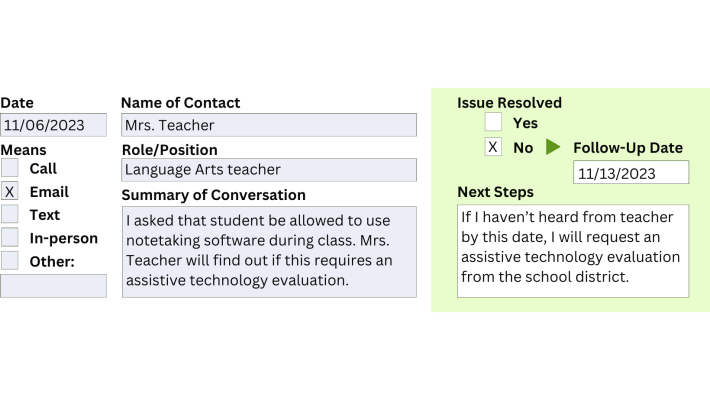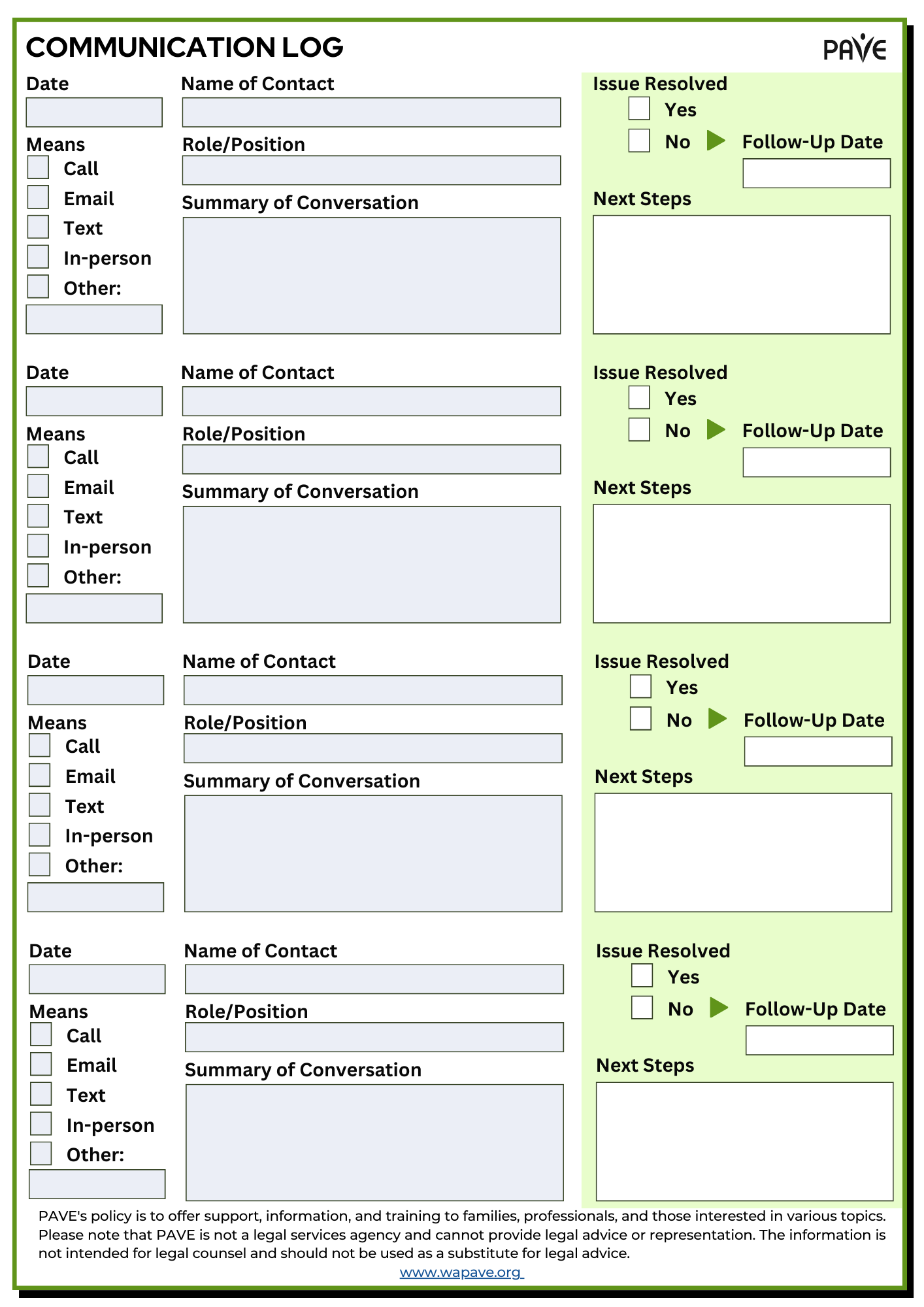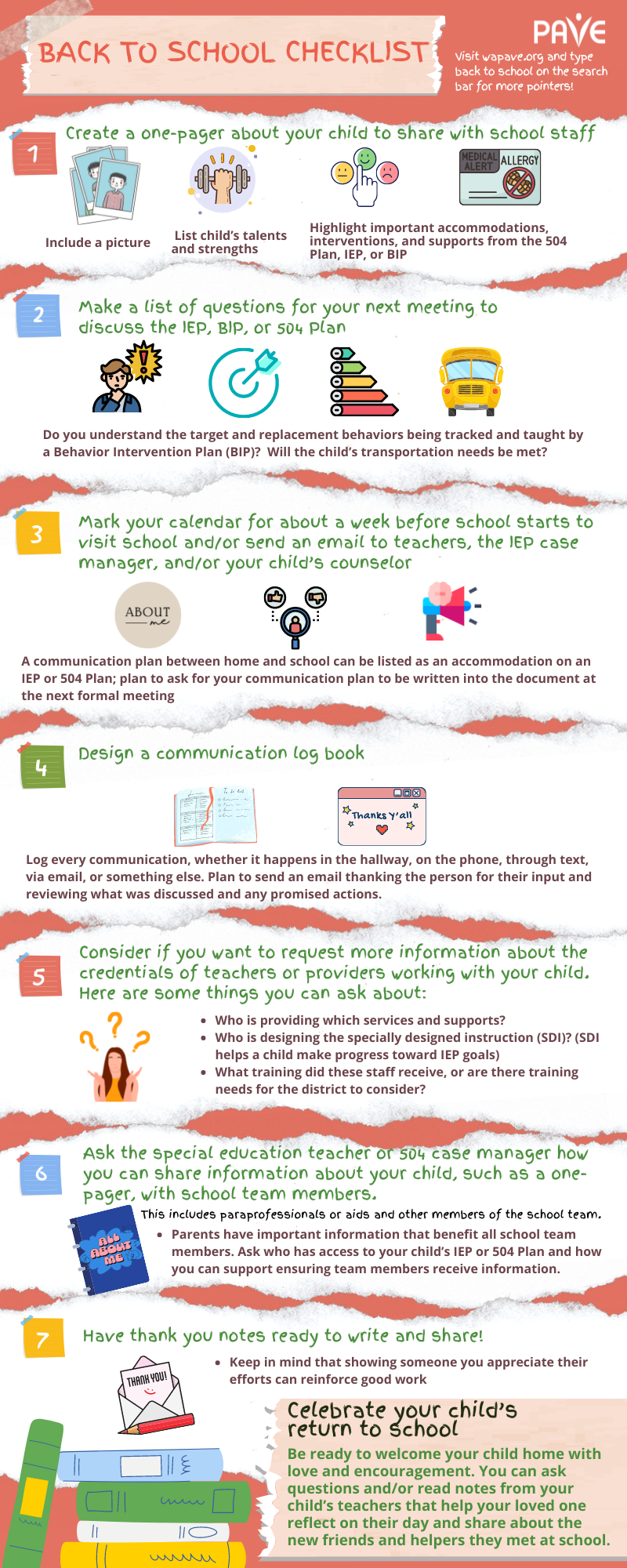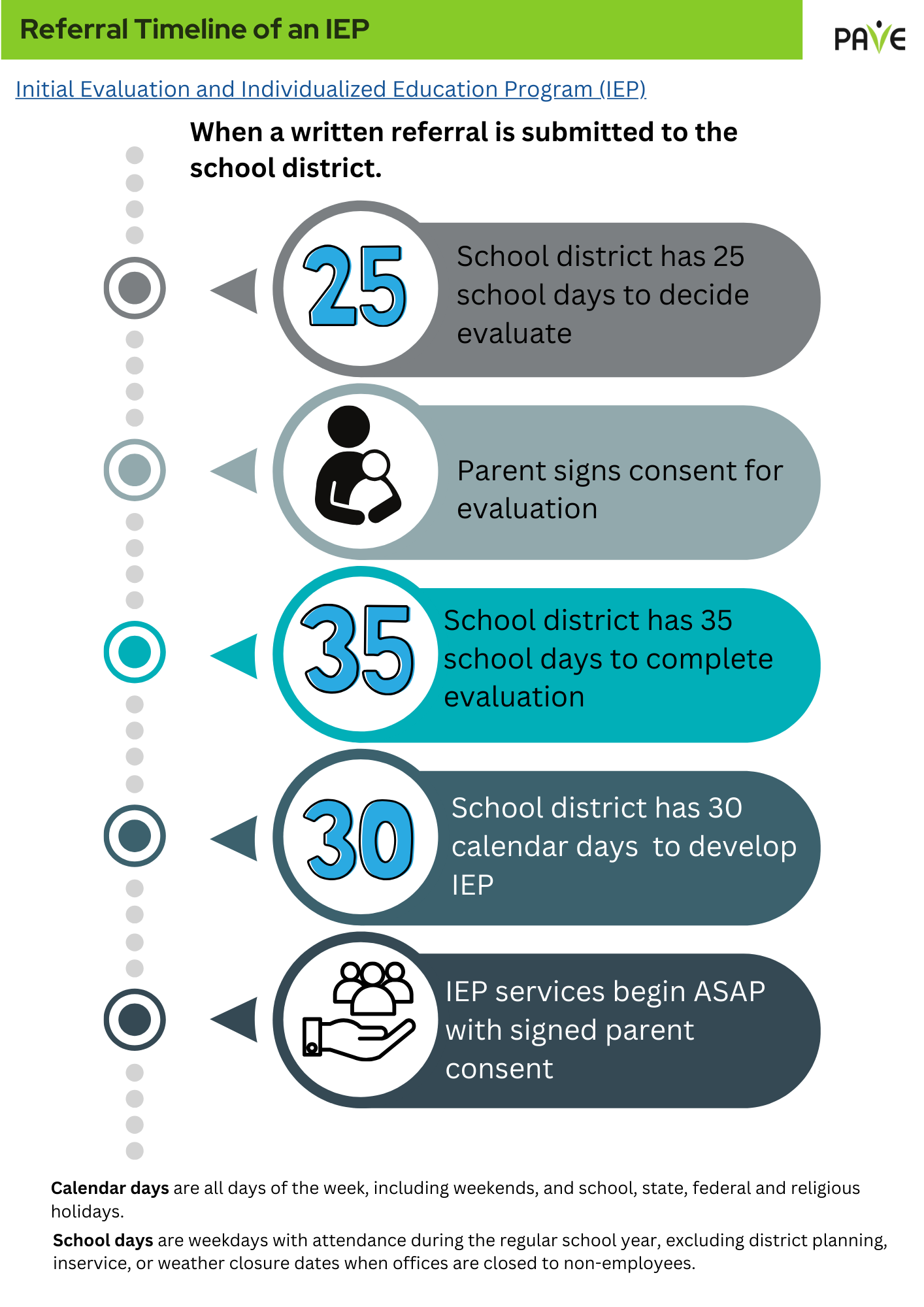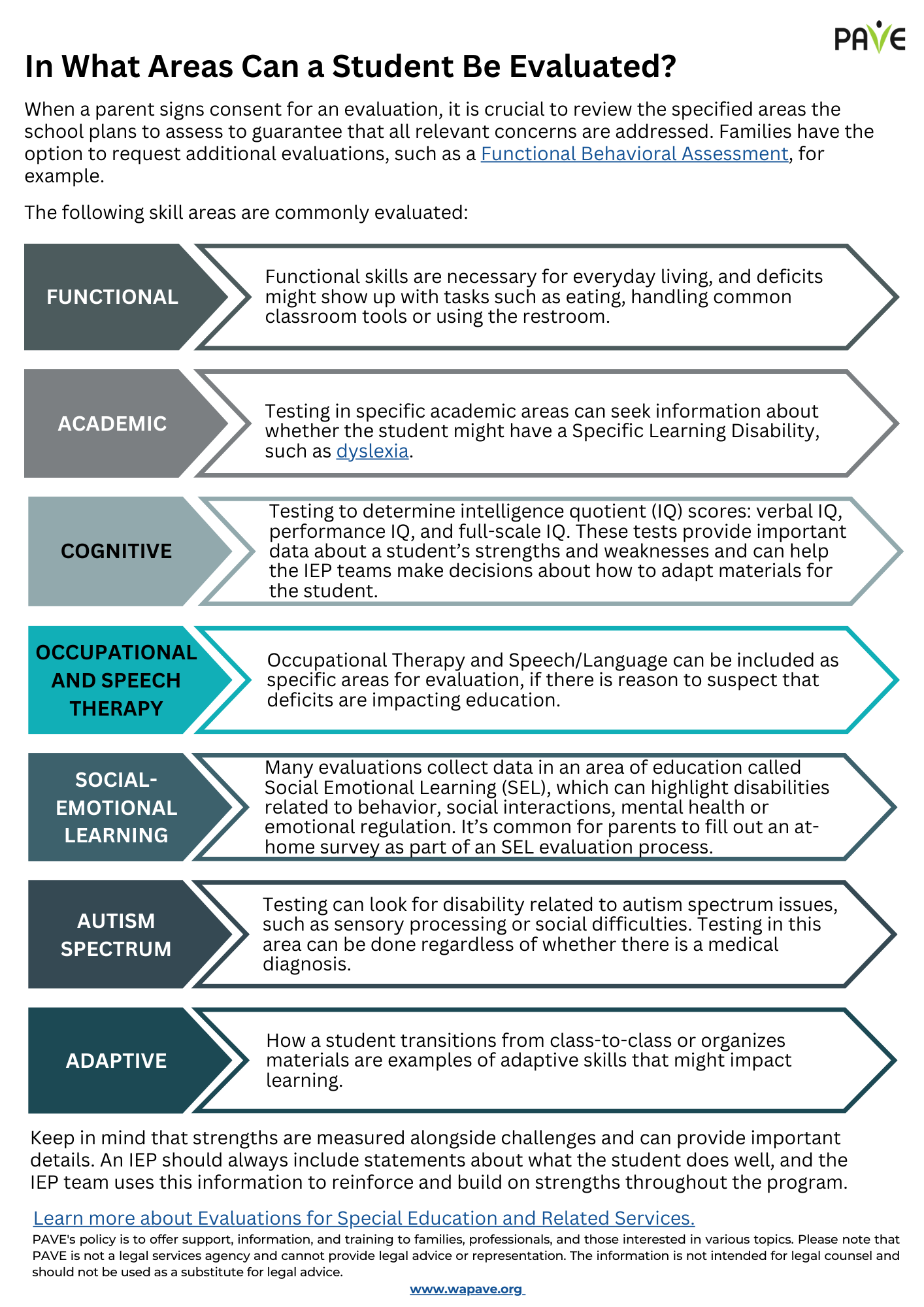ADA: Americans with Disabilities Act. Prohibits discrimination against individuals with disabilities in all public and private places open to the general public.
Adult Services: Programs available to support individuals after they become legal adults at 18.
Age of Majority: In Washington, 18. An adult is responsible for educational, vocational, financial, and other decisions unless other arrangements are made through legal means.
Aging Out: The process of ending the school year in which a student turns 21 and is no longer eligible for special education (IEP) services.
Compensatory Services: Extra educational services provided because an IEP team or another agency with authority determines that a student with a disability did not receive a Free Appropriate Public Education (FAPE).
DDA: Developmental Disabilities Administration. A state agency that provides a variety of employment, personal care, supportive housing, and other services based on eligibility. Transition-age youth may be eligible for a school-to-work program if one is available in their region.
DSB: Department of Services for the Blind. A state agency that provides vocational services and orientation and mobility training for individuals with visual impairments.
DVR: Division of Vocational Rehabilitation. A state agency that provides employment services to individuals with a wide range of disability circumstances. Students still enrolled in school might receive Pre-Employment Transition Services (Pre-ETS), and young adults also might apply for 1:1 support with an Individualized Plan for Employment (IPE). The agency has a wait list, called Order of Selection, for 1:1 IPE support but not for Pre-ETS.
Educational Evaluation: Used to determine eligibility for school-based services. A wide variety of assessments, questionnaires, and other tools determine how disability impacts a student’s ability to access academic and non-academic areas of education and whether specially designed instruction is needed to access FAPE.
Equity: A quality of fairness that is present when someone with a disability has appropriate, individualized help to enable the same access to opportunities that are available to individuals without disabilities.
ESSA: Every Student Succeeds Act. A 2015 law that reauthorized the 50-year-old Elementary and Secondary Education Act (ESEA), the nation’s education law that provides equal opportunity for all students.
FAPE: Free Appropriate Public Education. Learning that is equitable, accessible, and meaningful. FAPE is what a student with a disability is entitled to receive from the school, based on documented, individualized needs.
High School and Beyond Plan (HSBP): a future planning tool that is required for all Washington State students, beginning no later than 8th grade.
IDEA: Individuals with Disabilities Education Act. Federal law that grants funding to states to support educational programming for eligible students with disabilities. IDEA Part B supports children 3-21, and Part C supports children Birth-3.
IEP: Individualized Education Program. A unique school services plan for a student who is eligible based on disability circumstances, managed and documented by a team that includes family members and professionals.
IEP Transition Plan: A component of the IEP that is required by age 16 but can be added any time the student and IEP team are ready to discuss future goals and incorporate them into the student’s program, with goals and progress monitoring that consider life plans.
Inclusion: An environment where individuals with disabilities and without disabilities are learning or working together. The IDEA requires schools to deliver FAPE in the Least Restrictive Environment to encourage the inclusion of all students in general education spaces.
Individualized Plan for Employment (IPE): A service plan with support from a vocational rehabilitation agency.
Kevin’s Law: A Washington State law stating that a student receiving special education services has the right to participate in commencement ceremonies with same-age peers, regardless of when a diploma is earned.
LRE: Least Restrictive Environment. IDEA requirement that students receive special education services in general education settings to the maximum extent appropriate. Schools document why a student is unable to access FAPE within LRE (general education) before placing a student in a restrictive setting.
OCR: Office for Civil Rights. An enforcement agency that manages formal complaints and provides information about civil rights that protect individuals from discrimination based on race, gender, disability, and other factors. The U.S. Department of Education Office for Civil Rights is a federal agency with the responsibility of ensuring equal access to education through the enforcement of civil rights.
OEO: WA Governor’s Office of the Educational Ombuds: State agency that provides free online resources and 1:1 support for families navigating educational systems.
OSEP: Office of Special Education Programs. Federal agency within the US Department of Education that is responsible to administer the Individuals with Disabilities Education Act (IDEA).
OSERS: Office of Special Education and Rehabilitative Services. US Department of Education program with a mission “to provide leadership to achieve full integration and participation in society of people with disabilities by ensuring equal opportunity and access to, and excellence in, education, employment and community living.”
OSPI: Office of Superintendent of Public Instruction. Washington’s educational agency that partners with the state’s nine Educational Service Districts (ESDs) to provide guidance to Local Education Agencies (LEAs) that include 295 districts and 6 state-tribal education compact schools.
PAVE: Partnerships for Action, Voices for Empowerment. A non-profit agency that supports Washington families impacted by disability. A PAVE program is Parent Training and Information (PTI), which provides information, training, resources, and technical assistance to help family caregivers, students and professionals understand rights and responsibilities within education systems.
Person Centered Planning (PCP) : A method for helping an individual explore and celebrate life goals while building specific action steps and gathering people to offer support.
Pre-Employment Transition Services (Pre-ETS): Provided for groups of students by a vocational rehabilitation agency. In Washington DVR provides Pre-ETS for many disabilities, and DSB provides Pre-ETS for students with visual impairment. Included are job exploration, work-based learning experiences, counseling about educational opportunities, workplace readiness training, and instruction in self-advocacy.
Prior Written Notice (PWN): A required document that schools provide families after formal meetings. The PWN summarizes what was discussed and any agreements, disagreements, action items, or amendments to a student’s Individualized Education Program (IEP). A family/school communication plan can be designed at a meeting and documented in the PWN.
Procedural Safeguards: Written description of special education process, student/family rights, and options for dispute resolution.
Recovery Services: Additional educational opportunities considered to support students significantly impacted by the national health emergency caused by COVID-19.
School-to-Work: Programs available in many counties for students eligible for support from the Developmental Disabilities Administration (DDA).
Secondary Transition: Planning for and progressing through the change from high school to adult life.
Section 504: Part of the Rehabilitation Act of 1973. Provides anti-discrimination protections for individuals with disabilities throughout the lifespan.
Self-Advocacy: Ability to share thoughts and feelings, understand rights and responsibilities, make independent choices, and ask for help when needed.
SMART Goals: Specific, Measurable, Achievable, and Relevant goals set within a specific span of Time.
Synchronous/Asynchronous Instruction: Educational methods during distance learning. Synchronous instruction is provided when school staff directly interact with students in “real time,” whereas asynchronous instruction is recorded, independent, or parent-supported learning without school staff directly present.
Transition Services: Programming uniquely designed to support a student in preparation for adult life. Needs, strengths, preferences, and interests are considered for development of specially designed instruction, related services, community experiences, employment and other postschool adult living objectives. If appropriate, services include acquisition of daily living skills and provision of a functional vocational evaluation.
TVR: Tribal Vocational Rehabilitation. TVR is available for people with tribal affiliations in some areas of the state. Each TVR program operates independently. Contact each agency, listed on DVR’s website, for complete information about program access, service area, and eligibility.
You can download this information below:


